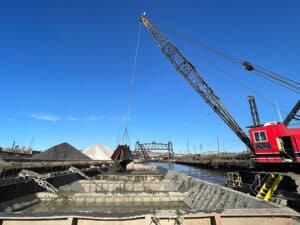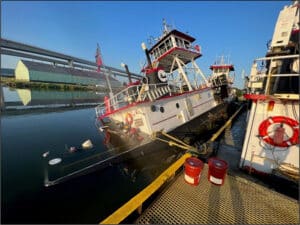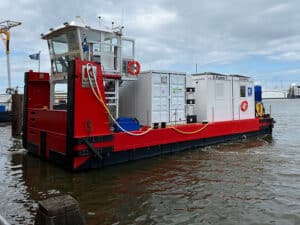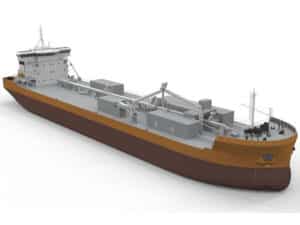
NTSB reports on costly contact between tow and moored barges
Written by Nick Blenkey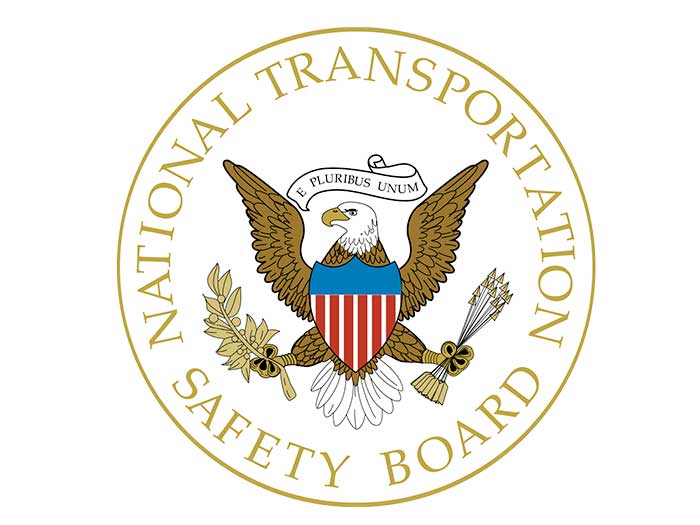
The National Transportation Safety Board has issued its report on an incident involving, among other things, a Kirby Inland Marine towboat captain with a high level of marijuana metabolites in his urine, an apprentice mate/steersman, and an encounter between the lead barges of a six-barge tow and barges moored at the Plaquemine Point Shipyard at Mile 208.5 of the Lower Mississippi River.
In the words of the NTSB summary:
On March 7, 2019, at 1020 local time, the towing vessel Leviticus was pushing six barges downbound on the Lower Mississippi River at mile 208.5 near Sunshine, La., with a crew of eight on board. While transiting through a river bend, the lead barges of the tow contacted barges moored at the Plaquemine Point Shipyard, breaking free a total of 11 barges. The 27 shipyard workers on board the barges were able to evacuate before contact; 10 sustained minor injuries. All barges were later recovered, and no pollution was reported. Damage to the shipyard ($520,000) and the tow ($19,500) amounted to an estimated $539,500.
Probable Cause
The National Transportation Safety Board determines that the probable cause of the contact of the Leviticus tow with the Plaquemine Point Shipyard was the captain’s decision to continue the training of an apprentice mate/steersman while navigating a challenging river bend downbound and meeting upbound traffic in high-water conditions.
As always, the full report contains a lot that the summary doesn’t convey.
Here’s an extract:
Drug/Alcohol Testing. Per company policy, samples for postaccident toxicological testing were taken from all crewmembers aboard the Leviticus about 1300 on the day of the accident: all results were negative for alcohol. Drug test results were also negative for the crewmembers, except the captain. The captain tested positive for marijuana metabolites (THCA), a reading of 27 nanograms per milliliter (ng/mL); negative test results may detect up to 15 ng/mL.
He was immediately dismissed by the company, and his merchant mariner’s credential was revoked by the Coast Guard.
Analysis: The captain’s THCA sample of 27 ng/mL was almost twice the allowed level. Given that THCA is an inactive metabolite and that urine concentration does not necessarily reflect recent use, it cannot be determined if the captain was under the influence of marijuana.
And another extract:
The downbound transit of Plaquemine Point was the steersman’s first. When the head of the tow was caught in an eddy while transiting the previous river bend at Manchac Point, the captain, who was the only other person in the wheelhouse at the time, had to guide the steersman through the bend, using corrective reverse rudder to free the tow. Moreover, Manchac Point was not considered to be a bend as challenging to navigate as Plaquemine Point. The transit of the previous bend should have heightened the captain’s attention in anticipation of the next and more dangerous bend or led him to more closely monitor the steersman. Thus, the captain could have steered the bend himself while having the steersman closely observe the maneuvers. However, in consideration of developing the steersman’s skills, the captain felt that he “didn’t want to mess his confidence up” by not allowing him to continue steering the tow through Plaquemine Point.
The captain and the pilot coached the steersman as he independently operated the tow’s steering and propulsion to “hold the point.” The captain did not realize the tow was caught in an eddy and headed toward Plaquemine Point Shipyard until less than a minute before the accident, when the captain first gave the steersman a “hard starboard” helm order and then took over the steering and propulsion of the tow to attempt to avoid striking the shipyard barges. The captain did not recognize the steersman was in trouble in sufficient time to take steps to prevent the accident.
As noted, the NTSB determined that the probable cause of the accident was the captain’s decision to continue the training of an apprentice mate/steersman while navigating a challenging river bend downbound and meeting upbound traffic in high-water conditions.
The NTSB concludes the report with this advice:
Transiting Hazardous Areas When Trainees Operate Towing Vessels
Trainers should have heightened attention when trainees are operating a vessel, especially during strong current conditions, navigating dangerous bends, transiting high-traffic areas, and other areas of known risk. When allowing trainees to operate under these circumstances, their experiences and skill levels should be considered. Captains should also encourage trainees to speak up at the earliest time of concern or any time when in doubt. Non-pertinent conversation and other distractions should be avoided.
Download the full report HERE

